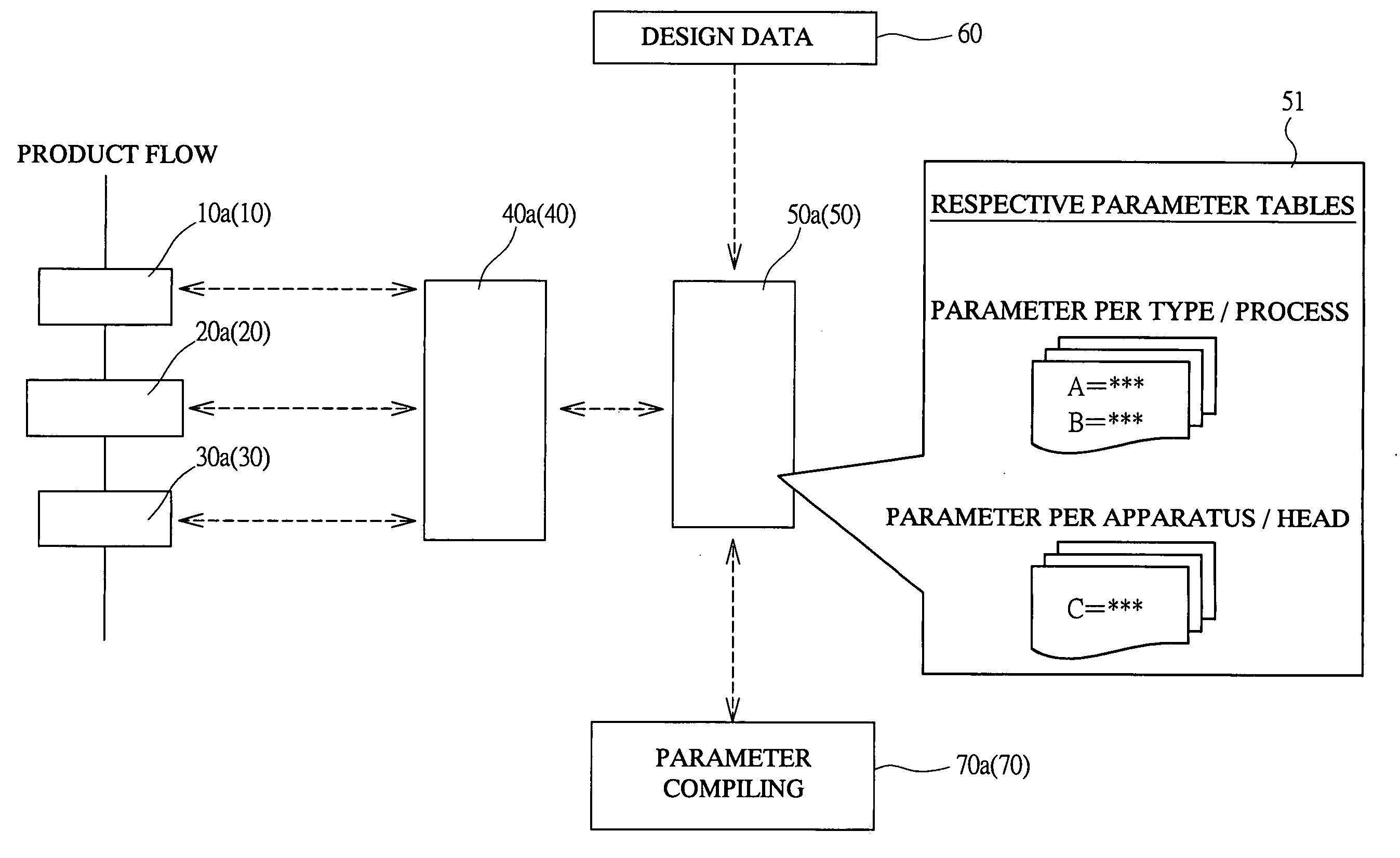Chemical mechanical polishing method, chemical mechanical polishing system, and manufacturing method of semiconductor device
- Summary
- Abstract
- Description
- Claims
- Application Information
AI Technical Summary
Benefits of technology
Problems solved by technology
Method used
Image
Examples
first embodiment
[0045] In a chemical mechanical polishing method of the present invention, a polishing condition such as a polishing rate or polishing time is calculated by use of a novel calculating formula, whereby chemical mechanical polishing is carried out. The novel calculating formula comprises a term dependent on a product wafer that is an object to be subjected to the chemical mechanical polishing and a term dependent on an apparatus for performing the chemical mechanical polishing to the product wafer, wherein the respective terms are combined by operators.
[0046] Under the condition that it is assumed that influences of the chemical mechanical polishing apparatus to be used on polishing conditions are the same, the term dependent on the product wafer has at least a parameter “A” exclusively representing influences of a film property such as film quality on the polishing condition, and a parameter “B” exclusively representing influences of a roughness state such as concave / convex patterns...
second embodiment
[0158] In a chemical mechanical polishing method for a multi-layer structure comprising a plurality of stacked films, which is the present invention, when a polishing rate of a certain stacked film among the plurality of stacked films that are objects to be subjected to the chemical mechanical polishing is converted is converted into that of another stacked film and when each polishing time of the chemical mechanical polishing of the plurality of stacked films that are objects to be polished is to be set, this embodiment employs a novel conversion table by which the conversion results can be distinctly easily determined.
[0159] In the chemical mechanical polishing of the multi-layer structure, the above-described novel calculating formulas found out by the present inventors can be employed, and a polishing condition such as a polishing rate or polishing time is calculated, thereby allowing the chemical mechanical polishing to be performed with higher accuracy.
[0160] In the present ...
third embodiment
[0181] In the above second embodiment, there has been described the case where the multi-layer structure “S” shown in FIG. 5A comprises the first-layer (uppermost-layer) stacked film 300 and the second-layer stacked film 200 corresponding to a non-uppermost layer and the polishing times are calculated by converting the polishing rate of the second-layer stacked film 200 to that of the stacked film 300. However, it has newly become clear that use of the conversion table shown in FIG. 6 can be applied to a chemical mechanical polishing method other than the above-described chemical mechanical polishing method.
[0182] That is, the description of the second embodiment is about the case where one of the stacked films of different types is converted to the other to carry out the chemical mechanical polishing under the same polishing condition. However, it can be seen in the conversion table that the selection ratio of a combination of the film type “A” and the polishing condition α is the...
PUM
| Property | Measurement | Unit |
|---|---|---|
| Time | aaaaa | aaaaa |
| Surface roughness | aaaaa | aaaaa |
Abstract
Description
Claims
Application Information
 Login to View More
Login to View More - R&D
- Intellectual Property
- Life Sciences
- Materials
- Tech Scout
- Unparalleled Data Quality
- Higher Quality Content
- 60% Fewer Hallucinations
Browse by: Latest US Patents, China's latest patents, Technical Efficacy Thesaurus, Application Domain, Technology Topic, Popular Technical Reports.
© 2025 PatSnap. All rights reserved.Legal|Privacy policy|Modern Slavery Act Transparency Statement|Sitemap|About US| Contact US: help@patsnap.com



